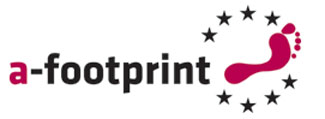| Jun 18, 2014 |
Foot pain sufferers find relief from 3D printer
|
|
(Nanowerk News) Around 200 million Europeans are estimated to suffer from disabling foot and ankle conditions. Europe’s health services spend over €300 million each year treating many of these patients with foot supports, typically worn inside the shoes or as splints.
|
|
Known as orthoses, supports can be mass-produced. Made this way, such supports cannot be easily adjusted to each patient for the most effective treatment. Meanwhile, custom-made foot supports work more effectively, though they can be expensive and time-consuming to make.
|
|
Current methods and foot models used to assess a patient can also result in the wrong prescription being made. Patients often have to make repeat visits for corrections to their supports.
|
|
The EU-funded project A-FOOTPRINT has developed a faster, more efficient way to make more effective foot supports customised to each patient. Project coordinator professor Jim Woodburn of Glasgow Caledonian University says the team’s researchers developed innovative foot models, which when combined with computer-aided design and 3D printers, allow the manufacture of more accurate foot supports. 3D printing manufacturing technology works by building up thin layers of plastic to create an object, in this case foot supports.
|
 |
|
The dynamic foot
|
|
A-FOOTPRINT’s researchers studied the gaits of healthy adults and patients with a range of foot and ankle disabilities. They combined these data with sophisticated real-time imaging of foot motion to develop the most accurate model of foot-dynamics achieved to date, says Woodburn.
|
|
Using the model, podiatrists assessing a patient can place skin-markers on anatomically significant points of the patient’s foot. The foot is then scanned in 3D, replacing the need for plaster of Paris or foam impression casts.
|
|
The motion of these points, combined with analysis of pressure points on the sole of the foot, is stored by the project’s information system. The project’s software (POD-CAD) then uses these data and clinical information about the patient to design a custom support.
|
|
The foot support is then created using 3D printing. The technique, developed by the project, slashes both the cost and time to manufacture, says Woodburn.
|
|
|
|
Compared to the current two-week turnaround to provide a shoe insert or splint, the A-FOOTPRINT process could take just one day, he says. The large European market for braces and supports is growing at 6% annually, and A-FOOTPRINT currently has no competitors for the type of products it can offer, says Woodburn.
|
|
"Some of the project's innovations are available already," he adds. Peacocks Medical Group, a project partner, is already selling foot orthotic products – licensed in conjunction with the project’s other partners – under its PODFO brand. PODFO claims to be the first commercially available 3D-printed functional foot orthosis to offer design flexibility and precise customisation.
|
|
The project's foot model presents opportunities beyond the orthotics sector. The model can be used for biomechanical research applications – prosthetics and implants for example – and for designing sports shoes.
|
|
"The POD-CAD system developed by our project also has excellent prospects for commercial exploitation within the next year or two," adds Woodburn.
|

